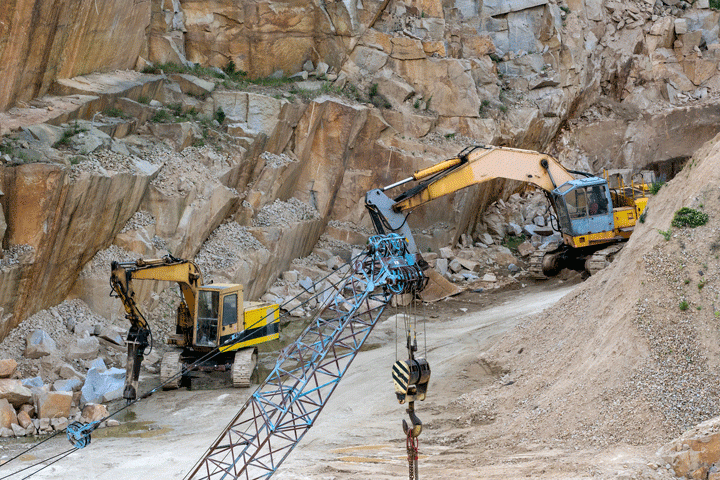Unlocking Natural Treasures: Granite Quarries in South Africa Revealed
Unlocking Natural Treasures: Granite Quarries in South Africa Revealed
Blog Article
Discovering the Rich Background and Lasting Practices of Granite Quarrying
As we stand on the precipice of discovering the intricate tapestry of granite quarrying, a trip through time exposes not simply the physical act of drawing out rock yet also the cultural and historical value woven right into the really textile of this practice. From the ancient origins that laid the foundation for modern-day quarrying techniques to the sustainable methods that are shaping the future of this industry, each chisel mark on granite surfaces informs a tale waiting to be unearthed (granite quarries in south africa). The tradition of granite quarrying extends far beyond plain extraction; it is a testament to human ingenuity, resilience, and the long-lasting allure of this impressive rock
Old Origins of Granite Quarrying
Dating back to ancient people, the practice of quarrying granite has been an integral component of human history and architectural improvement. The earliest evidence of granite quarrying go back to old Egypt, where massive pyramids and detailed sculptures were crafted from this resilient stone. The Egyptians made use of primitive devices to extract granite blocks from quarries, showcasing the significance of this material in their significant buildings.
Moving on in background, the Greeks additionally made significant contributions to the quarrying of granite. The Greeks utilized granite in various building wonders, such as temples and sculptures, showing their ability in shaping and carving this sturdy stone. The Romans additionally refined the strategies of quarrying granite, employing sophisticated devices like chisels and hammers to extract and form granite for their legendary frameworks.
Via the centuries, the method of quarrying granite has actually advanced, with modern technologies enhancing efficiency while keeping the ageless appeal of this all-natural stone - granite quarries in south africa. From ancient worlds to contemporary contractors, the heritage of granite quarrying remains to form our globe
Development of Quarrying Methods
The advancement of quarrying strategies has been marked by a continuous progression in the direction of higher performance and precision in drawing out granite. From the fundamental techniques utilized by our ancestors to the advanced modern technologies used in contemporary quarrying operations, the market has actually undergone significant developments. Early quarrying methods included manual labor with basic tools such as chisels, hammers, and wedges to remove granite blocks from the planet. As civilizations proceeded, strategies like fire-setting and primitive explosives were presented to facilitate the removal procedure.
In even more recent times, the development of machinery transformed the quarrying market, enabling faster removal rates and enhanced performance. Technologies such as diamond cable saws, high-pressure water jets, and pneumatically-driven drills have come to be conventional in contemporary quarries, enabling precise cutting and lowered waste. Improvements in computer-controlled equipment and 3D modeling have optimized quarrying operations, leading to minimal environmental impact and enhanced sustainability methods. As the demand for granite continues to climb, the development of quarrying methods remains essential to meeting market needs successfully and sustainably.
Cultural Value of Granite
Granite holds an extensive cultural importance across various human beings as a result of its enduring visibility in architectural masterpieces and prized monoliths. From the marvelous pyramids of Egypt to the complex carvings of the Angkor Wat temple in Cambodia, granite has actually been a product of option for revealing magnificence and durability in cultural heritage. In ancient Rome, granite columns embellished holy places and public structures, representing strength and permanence. The social importance of granite expands beyond its physical characteristics; it embodies strength, security, and eternity, making it a symbol of enduring heritages and customs.

Sustainable Practices in Quarrying
Among the abundant history of granite quarrying and its cultural importance lies a growing focus on lasting techniques within the sector. As view it environmental understanding and concerns concerning resource depletion have actually enhanced globally, the quarrying sector has actually progressively embraced sustainable approaches to decrease its influence on the environment and surrounding communities.

Additionally, reclamation and recovery of quarry sites post-extraction are important to sustainable methods. By bring back quarried areas to a natural or helpful state, such as developing wildlife habitats or leisure areas, quarriers can counter the ecological impact of their procedures and add favorably to the neighborhood environment.
Heritage of Granite Quarrying
With a historical background soaked in craftsmanship and industrial development, what enduring impact has granite quarrying left on the landscape of modern-day culture? The tradition of granite quarrying transcends plain removal methods; it has formed building marvels, city landscapes, and social heritage worldwide. The long lasting nature of granite has made it a recommended selection for monuments, structures, and facilities, standing as a testament to the skill and virtuosity of quarry workers across generations.
In addition, the economic footprint of granite quarrying can not be forgotten. The market remains to give employment opportunities and drive neighborhood economic climates in regions where granite removal is prevalent. It has actually also stimulated technological developments in quarrying visite site strategies and devices, bring about a lot more efficient and lasting practices.
In regards to sustainability, the legacy of granite quarrying includes initiatives to minimize environmental influences through improvement tasks and responsible resource monitoring. By balancing economic rate of interests with ecological stewardship, the industry strives to ensure that future generations can remain to gain from this long-lasting natural deposit.
Conclusion

Report this page